The purpose of this activity is to support students in learning to apply their knowledge of basic facts and place value to solve subtraction problems that involve renaming.
- Place value materials composed of individual items grouped into tens, such as BeaNZ in film canisters, ice block sticks bundled with rubber bands (hundreds with hair ties), or a paper form such as Place Value People. Bundled materials are important as they allow partitioning and combining without the need for “trading” tens blocks for ones.
- A place value board. This allows for the organisation of materials into columns and, in turn, supports calculation strategies. Three-column and four-column place value boards are available here.
The examples below use images of BeaNZ and canisters used to physically model the numbers. You may prefer to use iceblock sticks in bundles of 10, or Place Value People. We recommend that you focus on just one of these within any given lesson.
- Pose subtraction problems that involve renaming of ones as groups of ten. For example:
You have 64 beans. I take 27 of the beans away.
How many beans do you have left?
Set up a physical model using the two-column place value board. Model the calculation using the materials, and record the calculation vertically.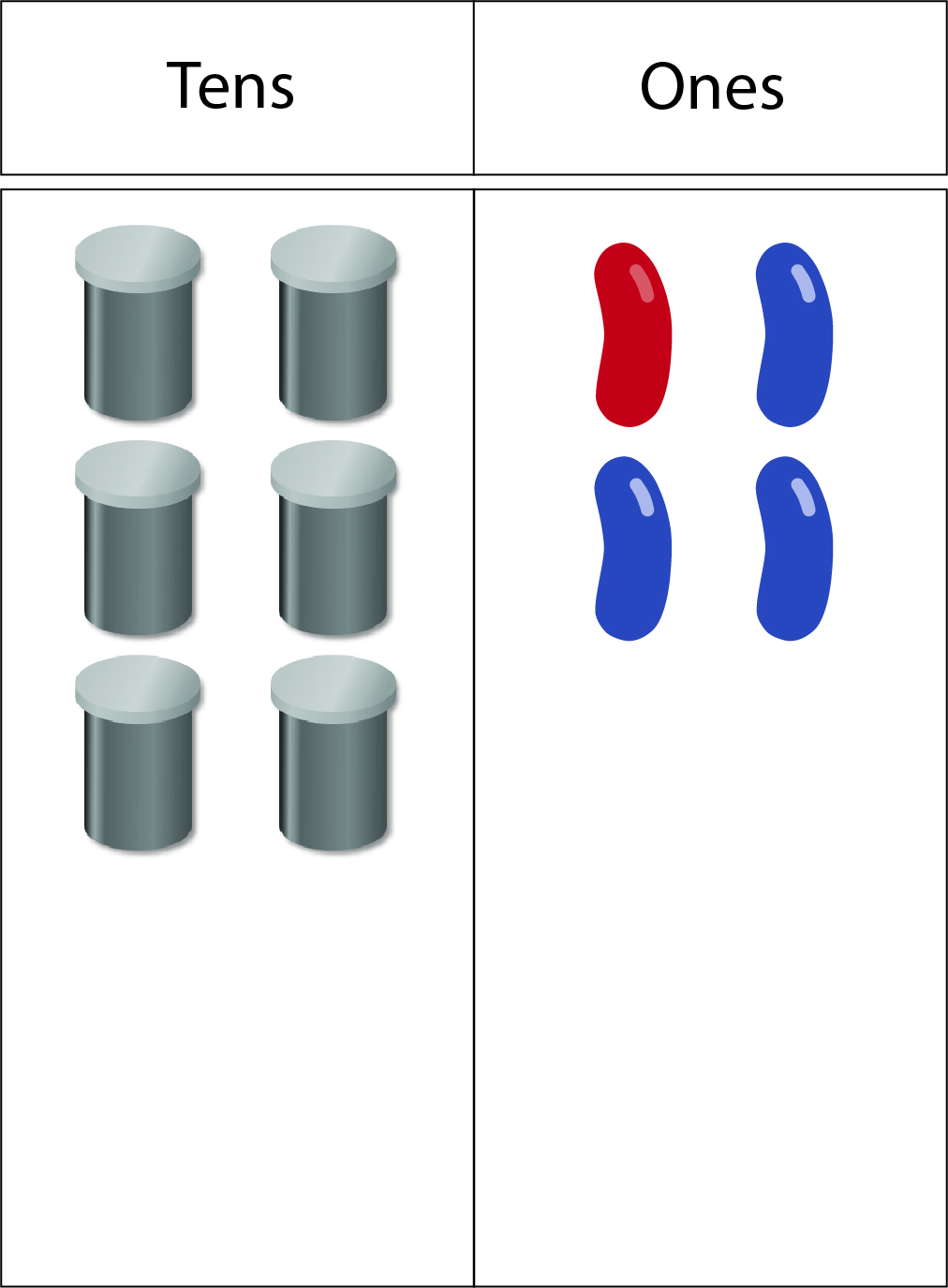
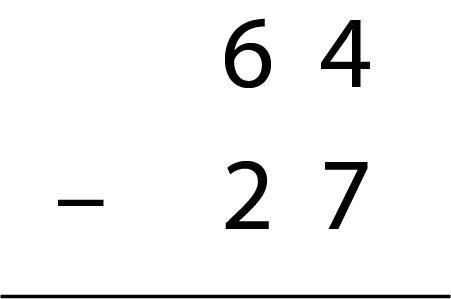
- Ask the student to suggest what amount might be taken away first. Their natural tendency is likely to be to remove the larger place value (tens) first. In this case 64 – 20 = 44.
The capacity to subtract only tens, without needing to change the ones, is an important procedure to develop. Some students might try to take away the four, subtract 20, then ‘add the four back on’, which creates unnecessary memory load.
- Demonstrate the subtraction of two tens from six tens, using the ten-bean canisters.
I am going to take away the two tens in 27 from the 64 beans (remove two ten-bean canisters). Now I have 47 beans left. The beans in the ones column have not changed. I have taken away 20 of the 27 beans I need to take away.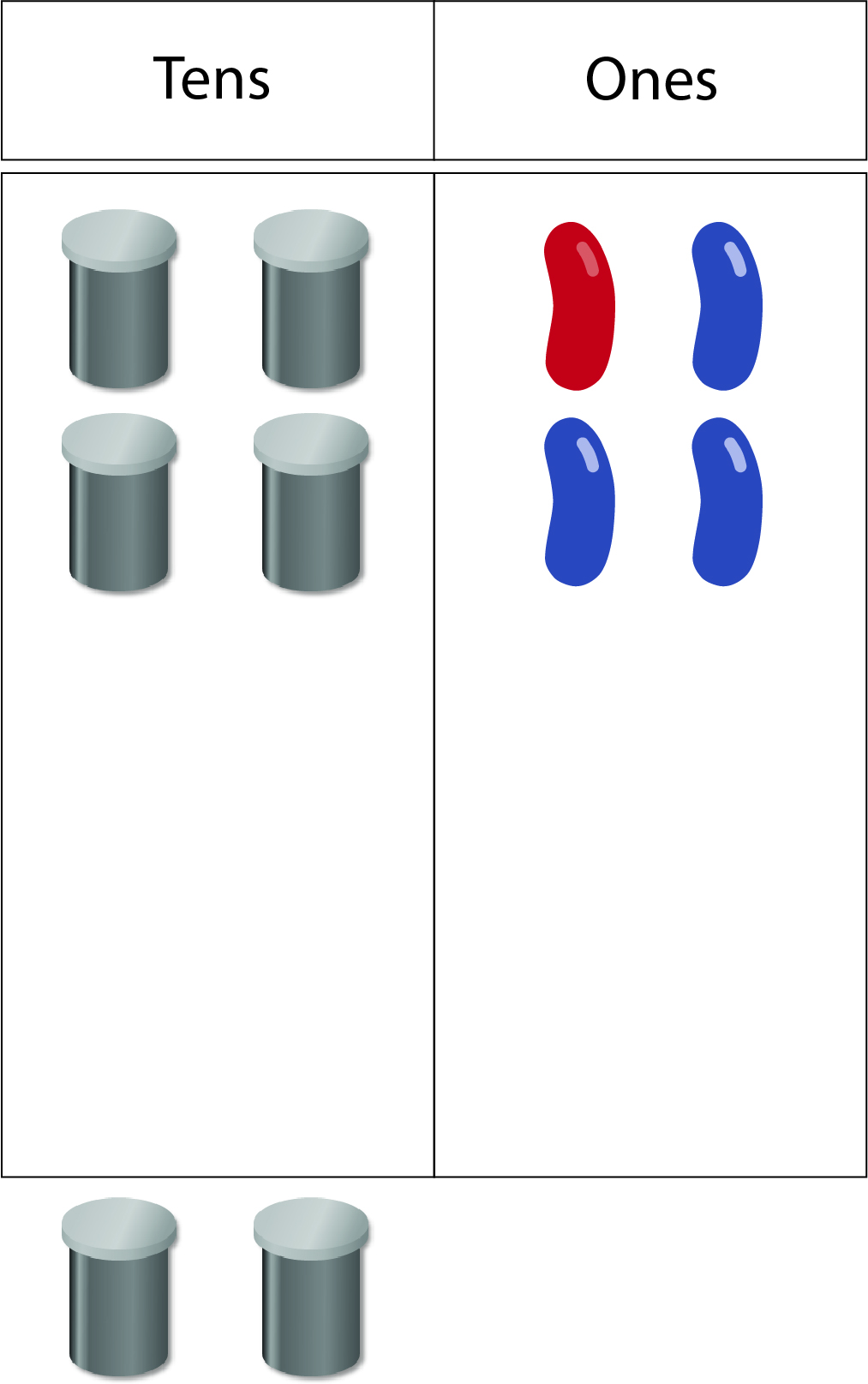
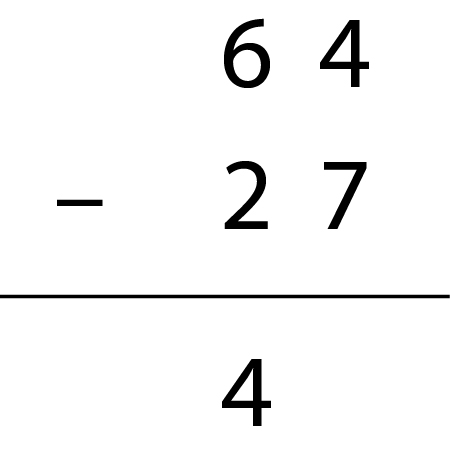
Removing 7 ones requires more ones than are present in the starting number. More ones are available by ‘decomposing’ a ten to create 14 in the ones place.
- Demonstrate decomposing one of the ten-bean canisters into a group of ten individual beans and move the ten beans into the ones column on the place value board.
- Remove the empty canister and emphasise the remaining canisters and individual beans.
I have taken away 20 beans (point to the two ten-bean canisters previously removed). I have 44 beans remaining. - I need to take away 7 more beans to take away the full 27 beans. But I can’t take away 7 from 4. I need to take 10 beans from the tens column and add them to the ones column. Then I will have enough beans to subtract 7 from (take the beans from one of the ten-bean canisters, add them to the ones column, and hide the empty canister from sight. This is important - do not display the empty canister beside the two subtracted canisters as this would indicate a subtraction of 30).
- Now I have 14 beans in the ones column and 30 beans in the tens column. I still have 44 beans, but they are displayed differently.
- Demonstrate the written subtraction of a ten from the tens column, by crossing out the 6 (in 64) and writing a 5 in superscript above the tens column.
- Demonstrate the written addition of this ten to the ones column by writing a 1 in superscript above the ones column (i.e. above the 4 in what was 64). The 27 should remain unchanged.
The resulting sum, which was previously written as “4”, should be crossed out.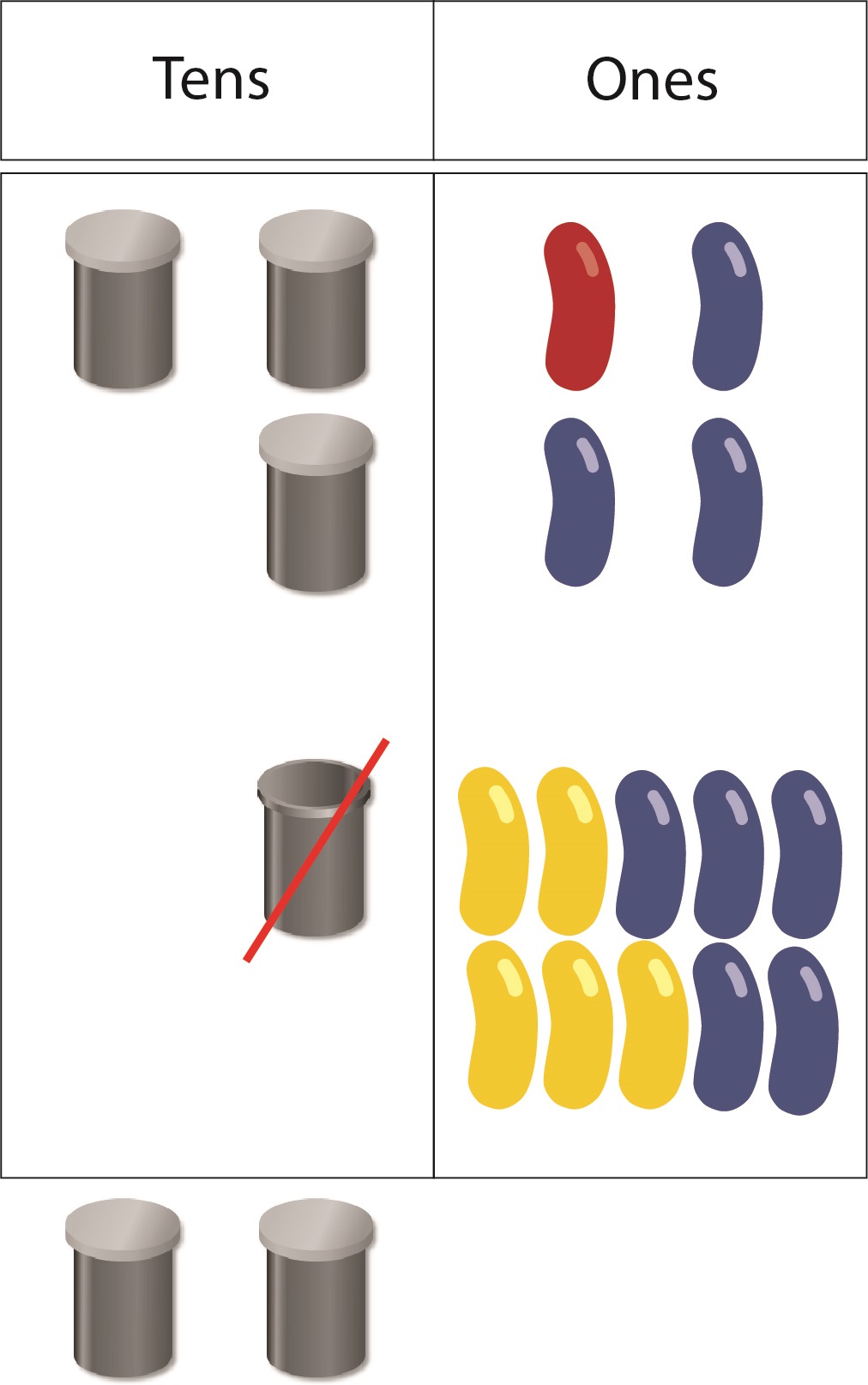
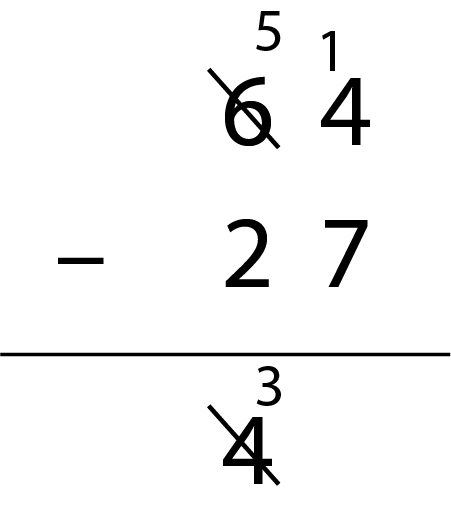
- The calculation of 14 – 7 = 7 gives the ones digit of the answer. Demonstrate taking away 7 beans from the ones column.
- I am going to take away 7 beans from my 14 individual beans. Now I have 7 beans remaining in the ones column. In total, I have 37 beans remaining. I have taken away the full 27.
- Write the remaining 7 in the ones column of your vertical algorithm to finish resulting sum (37).
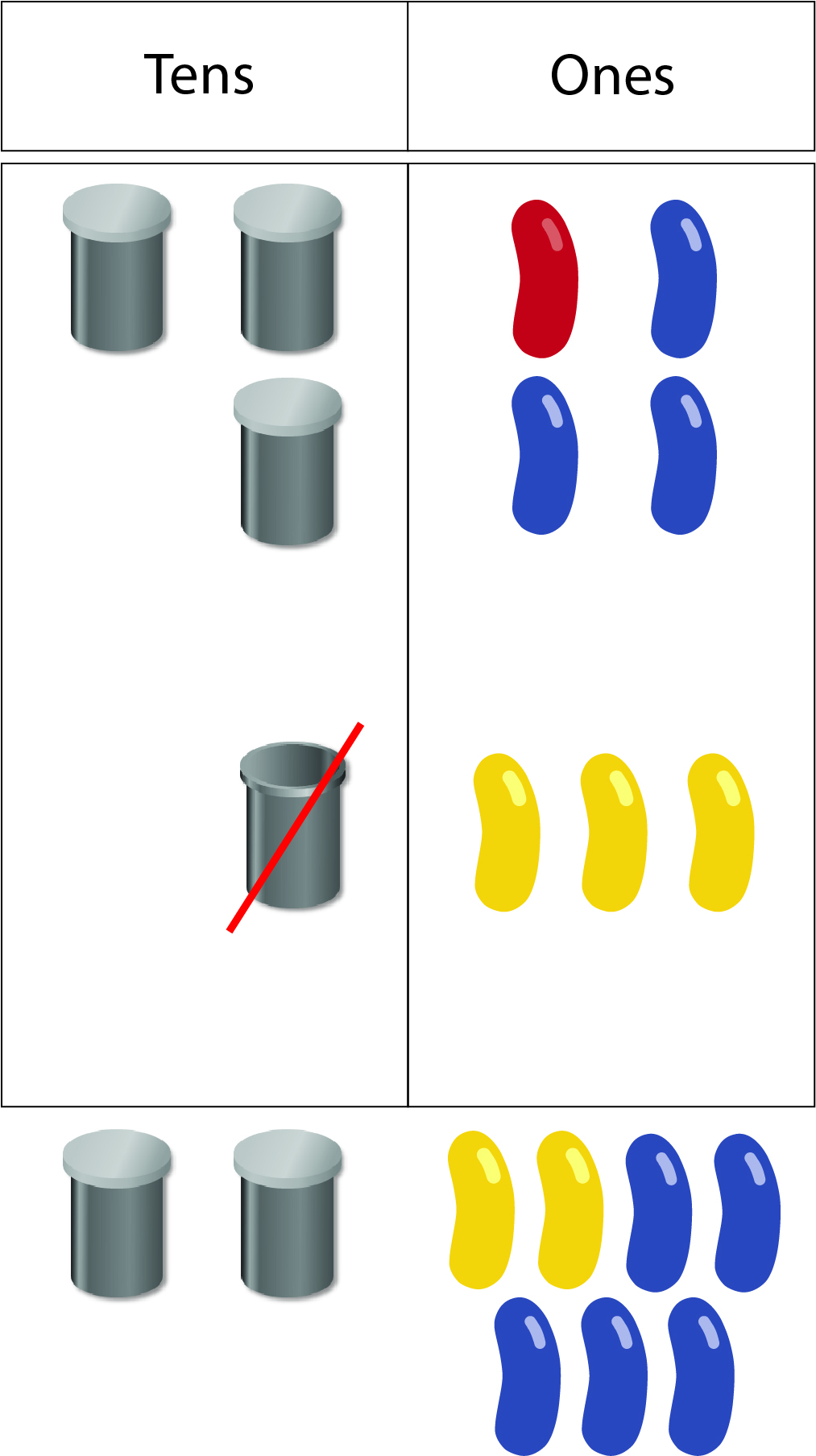
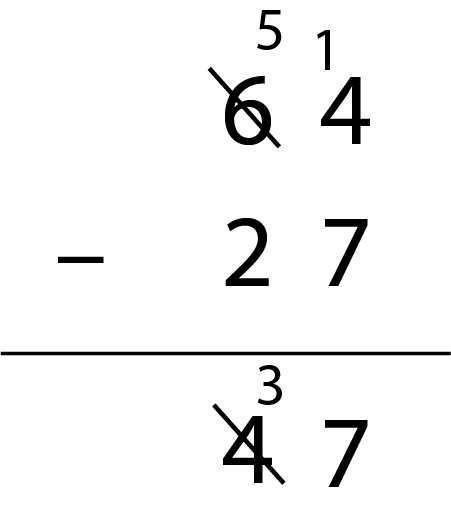
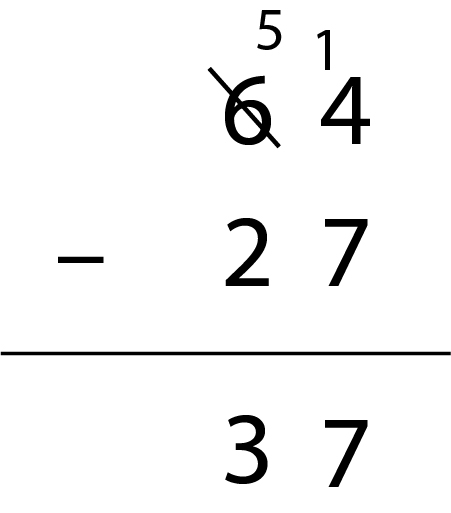
- Pose further subtraction problems that involve renaming. As students progress, support them to increase their efficiency in using the written algorithm. Eventually, they should move to first renaming and subtracting ones when using the algorithm.
Next steps
- Pose similar subtraction problems that involve renaming, and are set in real-world contexts. Choose realistic contexts appropriate to your students, and encourage students to relate the problem back to the equipment if necessary. For example, “there are 55 waka racing in the harbour. If 18 of them cross the finish line after 5 minutes and 23 seconds, how many will still be racing?”
- Increase the level of abstraction by covering the materials, asking anticipatory questions, and increasing students’ use of, and efficiency using, the vertical written algorithm.
- Increase the number size so the starting number is pushed over 100 and eventually extended into three digits. Once your students are confident using the place value structure you might use more structured materials such as place value blocks.
A suggested sequence for extending the difficulty of the subtractions is:
- One ten needs to be renamed as ten ones (e.g. 74 - 58)
- One hundred needs to be renamed as ten tens (e.g. 213 – 90 then 156 - 83)
- Both hundreds and tens need to be renamed (e.g. 342 - 185).